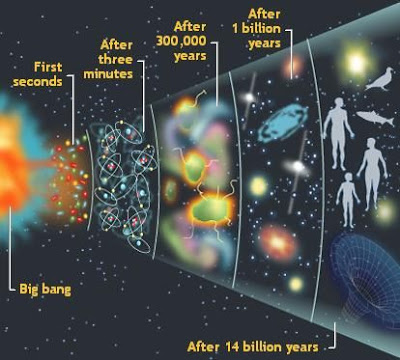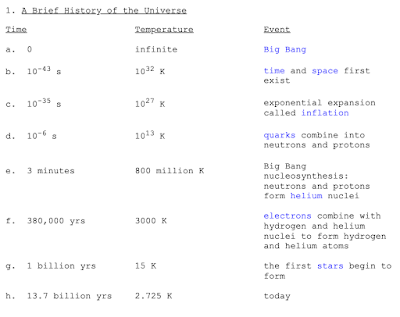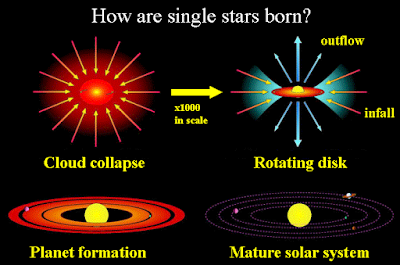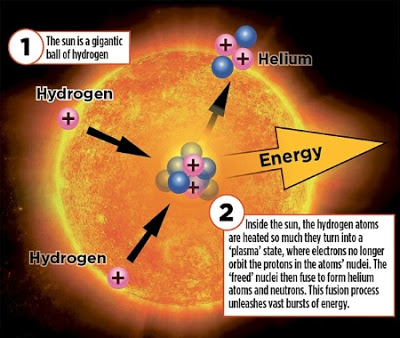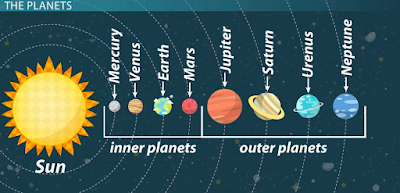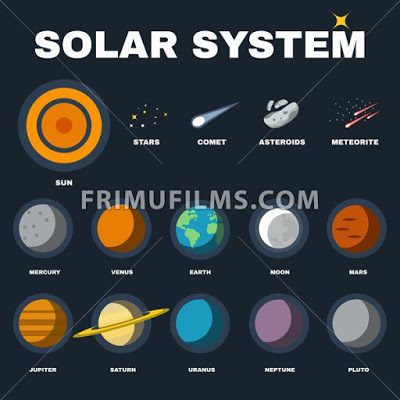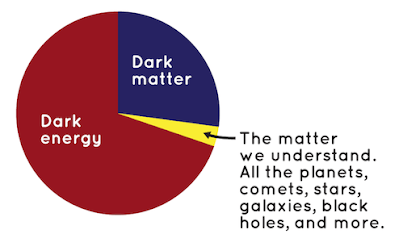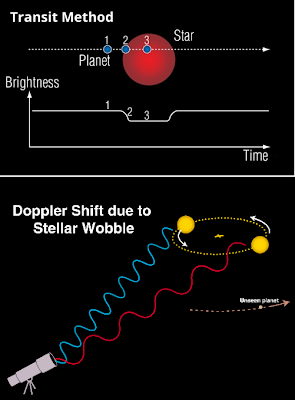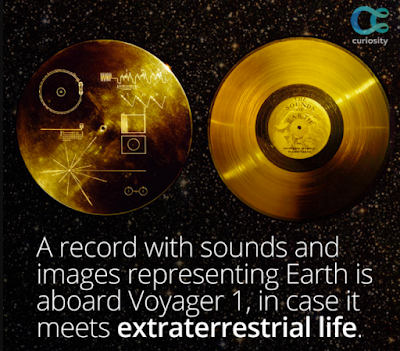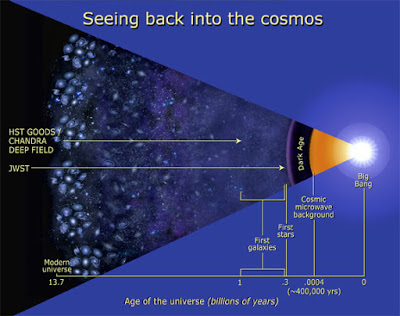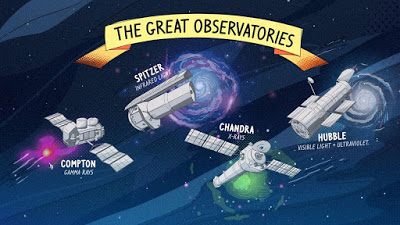Big Bang Theory
*Big Bang created and stretched space from a point of singularity and later expanded as an inflation model with fireball (hot) temperature.
*After inflation and heat, cooling took place at the period of CMB formation and light radiation began which was the
*Big Bang created and stretched space from a point of singularity and later expanded as an inflation model with fireball (hot) temperature.
*After inflation and heat, cooling took place at the period of CMB formation and light radiation began which was the
subtle evidence for galaxies and stars formations.
*CMB radiation which was believed to have formed about 3,80,000 years after the big bang theory is the primary evidence that the universe began in a hot and dense state 13.8 billion years ago.
*CMB radiation which was believed to have formed about 3,80,000 years after the big bang theory is the primary evidence that the universe began in a hot and dense state 13.8 billion years ago.
*Regarding elements, hydrogen and helium were formed during the big bang period while other elements are formed during the formation of massive stars, low stars and super nova process.
*92 natural elements were formed from effects of super nova while 26 elements were man-made.
*92 natural elements were formed from effects of super nova while 26 elements were man-made.
Electromagnetic Radiation
*Electromagnetic radiation is arranged by wavelengths into Radio waves, Micro waves, Ultraviolet waves, Visible light, Infrared rays, X rays and Gamma rays.
*Only Visible light is visible to the human eye while earth's atmosphere protects us from
*Electromagnetic radiation is arranged by wavelengths into Radio waves, Micro waves, Ultraviolet waves, Visible light, Infrared rays, X rays and Gamma rays.
*Only Visible light is visible to the human eye while earth's atmosphere protects us from
exposure of other higher radiation waves that can be harmful to human life.
*As earth's atmosphere blocks higher radiation, space organisations develop large telescopes and put them in space to study other radiation details.
*As earth's atmosphere blocks higher radiation, space organisations develop large telescopes and put them in space to study other radiation details.
Star Formation
*Large diffuse cloud of gas turns into a star and surrounding planets when supernova explosion shoots a shocking wave to nearby interstellar gas and dust where as the clouds collapse due to gravity.
*Large diffuse cloud of gas turns into a star and surrounding planets when supernova explosion shoots a shocking wave to nearby interstellar gas and dust where as the clouds collapse due to gravity.
*Collapsed clouds form the swirling (rotating) disks called as solar nebula.
*Materials repeatedly infall and outfall until they settle into the central region of cluster in which gravity at centre pulls majority of materials that forms stars with mass while remaining
*Materials repeatedly infall and outfall until they settle into the central region of cluster in which gravity at centre pulls majority of materials that forms stars with mass while remaining
materials outside disk forms planets and moons which frames into a solar system.
*Planets orbit the stars based on relativity theory of space-time curvature and stars produce light through fusion process.
*Planets orbit the stars based on relativity theory of space-time curvature and stars produce light through fusion process.
*If there is no fuel to continue the fusion process, the stars become dead by turning into white dwarfs or neutron stars or black holes.
Life Cycle Of A Star
*Average stars turns into white dwarfs while massive stars turns into neutron stars else black holes.
*Our sun is average or low massive star which would turn into white dwarf after ~ 5 billion years.
*Average stars turns into white dwarfs while massive stars turns into neutron stars else black holes.
*Our sun is average or low massive star which would turn into white dwarf after ~ 5 billion years.
*When massive stars lacks enough fuel for fusion process, the massive stars turns into red supergiants which in turn produces super nova.
*This super nova produces neutron stars else black holes.
*This super nova produces neutron stars else black holes.
*Neutron stars are formed through neutron degenerate matters and black holes are formed when star is more massive than the all other existing stars.
*Pulsar is the subset of neutron star which is viewed as a star with magnetic field rotation.
*Pulsar is the subset of neutron star which is viewed as a star with magnetic field rotation.
*Black holes can nevertheless be seen as event horizon boundary exceeds the speed of light and nothing escapes from black hole once entered.
*White dwarf is ~ 1.2 solar mass of sun, neutron star is ~ 1.4 to 3 solar mass of sun, black hole is above 3 solar mass of sun.
*White dwarf is ~ 1.2 solar mass of sun, neutron star is ~ 1.4 to 3 solar mass of sun, black hole is above 3 solar mass of sun.
Source Of Sunlight
*Source of sunlight is nuclear fusion.
*Nuclear fusion is a process inside the sun's core where hydrogen atoms fuse together into helium atoms producing high energy photons called light.
*Source of sunlight is nuclear fusion.
*Nuclear fusion is a process inside the sun's core where hydrogen atoms fuse together into helium atoms producing high energy photons called light.
*Photons produced from nuclear fusion takes ~ 5,000 years to reach the sun's photosphere and takes ~ 500 seconds to reach the earth's atmosphere.
*Sun's primary radiation is absorbed by earth's atmosphere while remaining radiation reach the earth's surface as visible sunlight.
*Sun's primary radiation is absorbed by earth's atmosphere while remaining radiation reach the earth's surface as visible sunlight.
*Plants need sunlight to grow while animals and humans need plants for food as well as oxygen produced by plants through photosynthesis.
*Sunlight also boosts the humans vitamin D.
*Without sunlight there is no photosynthesis and humans would freeze.
*Sunlight also boosts the humans vitamin D.
*Without sunlight there is no photosynthesis and humans would freeze.
Our Solar System
*Our solar system is made up of planets, moons, asteroids and comets that orbit our Sun.
*4.6 billion years ago a cloud of star dust was formed and collapsed which turned into a solar nebula probably because of a nearby exploding star.
*Our solar system is made up of planets, moons, asteroids and comets that orbit our Sun.
*4.6 billion years ago a cloud of star dust was formed and collapsed which turned into a solar nebula probably because of a nearby exploding star.
*This lead to create a rotating disk of matter around it.
*Finally the pressure caused by the matter was so heavy that hydrogen atoms began to fuse into helium which released an enormous amount of energy and our Sun was born.
*Finally the pressure caused by the matter was so heavy that hydrogen atoms began to fuse into helium which released an enormous amount of energy and our Sun was born.
*Sun swallowed up more than 99% of everything in disk while bits of materials clumped together forming bigger sphere objects called planets.
*Remaining bits could not turn into a planet which became rocky asteroids and icy comets.
*Remaining bits could not turn into a planet which became rocky asteroids and icy comets.
*Scientists learns more about our solar system by examining the asteroids and comets impacts.
*Giant impact theory proposed that a collision between earth and small planet (size of mars) lead to the formation of debris in an orbit around earth to form our moon.
*Giant impact theory proposed that a collision between earth and small planet (size of mars) lead to the formation of debris in an orbit around earth to form our moon.
Dark Matter - Dark Energy
*Two dominant ingredients of the university are dark matter and dark energy.
*Astronomers are unsure of dark matter and dark energy physical nature as they are invisible in nature.
*Dark matter covers 27% while dark energy covers 68% and
*Two dominant ingredients of the university are dark matter and dark energy.
*Astronomers are unsure of dark matter and dark energy physical nature as they are invisible in nature.
*Dark matter covers 27% while dark energy covers 68% and
final ordinary matter we understand covers 5%.
*Dark matter might interact with gravity but never emit, absorb or reflect light makes it difficult to spot.
*Dark energy is the reason preferred for the universe acceleration of expansion as per Hubble observations.
*Dark matter might interact with gravity but never emit, absorb or reflect light makes it difficult to spot.
*Dark energy is the reason preferred for the universe acceleration of expansion as per Hubble observations.
*There is a theory suggesting that "gravity, weak, strong and electromagnetic force" combines at one stage into super force and this super force might be the reason behind dark energy structure which is on the table without extraordinary evidence.
Finding Exoplanets
*To see exoplanets directly in an image is so difficult because of the brightness of the star.
*The planet orbits the star and the brightness of those star concealed possibilities of direct imaging.
*To see exoplanets directly in an image is so difficult because of the brightness of the star.
*The planet orbits the star and the brightness of those star concealed possibilities of direct imaging.
*Similarity between our solar system and new distant planet system is that planets orbit around sun-like star while the difference is planet mass and some exoplanets orbit around two or more stars (binary star).
*2 indirect methods to explore exoplanets are Doppler & Transit.
*2 indirect methods to explore exoplanets are Doppler & Transit.
Doppler Method
*When the planet orbits the star with respect to centre of mass (barycentre) the star seems to wobble and we use this wobble effect to detect the planet presence based on spectroscopy technique.
*Variations in colour of light from the star detects the planet.
*When the planet orbits the star with respect to centre of mass (barycentre) the star seems to wobble and we use this wobble effect to detect the planet presence based on spectroscopy technique.
*Variations in colour of light from the star detects the planet.
Transit Method
*When the planet orbits the star the brightness of the star is temporarily blocked by the passing planet.
*Through this technique we can find the size and density of the planet.
*When the planet orbits the star the brightness of the star is temporarily blocked by the passing planet.
*Through this technique we can find the size and density of the planet.
Golden Record
*Scientists are in search of habitable exoplanets as well as extraterrestrial life.
*NASA launched Voyager into space on 1977 with the golden record.
*Golden record is a copper disk containing sounds and images portraying human life on earth.
*Scientists are in search of habitable exoplanets as well as extraterrestrial life.
*NASA launched Voyager into space on 1977 with the golden record.
*Golden record is a copper disk containing sounds and images portraying human life on earth.
*It was an idea proposed by Carl Sagan to share the story of our world to extraterrestrials if they encounter it in the distant future.
Space Telescopes
*Light takes time to travel from one place to another place.
*So, when we look at the distant objects in the universe it means that we are not looking at the present incidents but we are obviously looking at the past incidents as the light takes time to
*Light takes time to travel from one place to another place.
*So, when we look at the distant objects in the universe it means that we are not looking at the present incidents but we are obviously looking at the past incidents as the light takes time to
travel across the universe to reach us.
*This is the reason astronomers often say that the large telescopes are like time machines as the distant light we observe is the old light in the universe.
*This is the reason astronomers often say that the large telescopes are like time machines as the distant light we observe is the old light in the universe.
*Space telescopes are useful to study the planets, stars and galaxies in depth by detecting the waves which are not viewable from earth's ground as our atmosphere lets only some light through while blocking others.
*Telescopes are available in various sizes and when the diameter of apertures are more the quality of images are high.
*Quality of telescopes is decided by apertures which means the opening in a lens through which light passes to reach the telescope camera.
*Quality of telescopes is decided by apertures which means the opening in a lens through which light passes to reach the telescope camera.
*The brightness of the image captured falls on the CCD (Charge Coupled Device) sensors.
*The minimum diameter of apertures are 2.8 inches.
*When aperture size increases the diameter increases for which the quality of image and brightness will be high.
*The minimum diameter of apertures are 2.8 inches.
*When aperture size increases the diameter increases for which the quality of image and brightness will be high.
*So, large telescopes have large diameters and advantages of using large telescopes will produce high quality images of space.
*Few examples of wavelength regions beyond the spectrum of visible light where astronomers can learn about the universe through telescopes are,
*Few examples of wavelength regions beyond the spectrum of visible light where astronomers can learn about the universe through telescopes are,
*Chandra Telescope - Designed to detect X rays
*Spitzer Telescope - Designed to detect Infrared rays
*Compton Gamma Rays Telescope - Designed to detect Gamma rays, X rays
*Hubble Space Telescope (HST) - Designed to detect Visible light, UV waves, near Infrared and deep space
*Spitzer Telescope - Designed to detect Infrared rays
*Compton Gamma Rays Telescope - Designed to detect Gamma rays, X rays
*Hubble Space Telescope (HST) - Designed to detect Visible light, UV waves, near Infrared and deep space
*James Webb Space Telescope (JWST) - Designed to look deeper into space to examine the earliest stars and galaxies.
*LIGO (Laser Interferometer Gravitational Wave) - Detect gravitational waves different from electromagnetic radiation & is located at earth's ground level.
*LIGO (Laser Interferometer Gravitational Wave) - Detect gravitational waves different from electromagnetic radiation & is located at earth's ground level.
Conclusion
*Astronomers must have commendable confidence to "THINK OUTSIDE THE BOX" to understand the objects that are remote from the earth and to come up with various results which might be useful for the human kind.
*Astronomers must have commendable confidence to "THINK OUTSIDE THE BOX" to understand the objects that are remote from the earth and to come up with various results which might be useful for the human kind.
Solar System Video
Sun Video
Universe Origin

 Read on Twitter
Read on Twitter